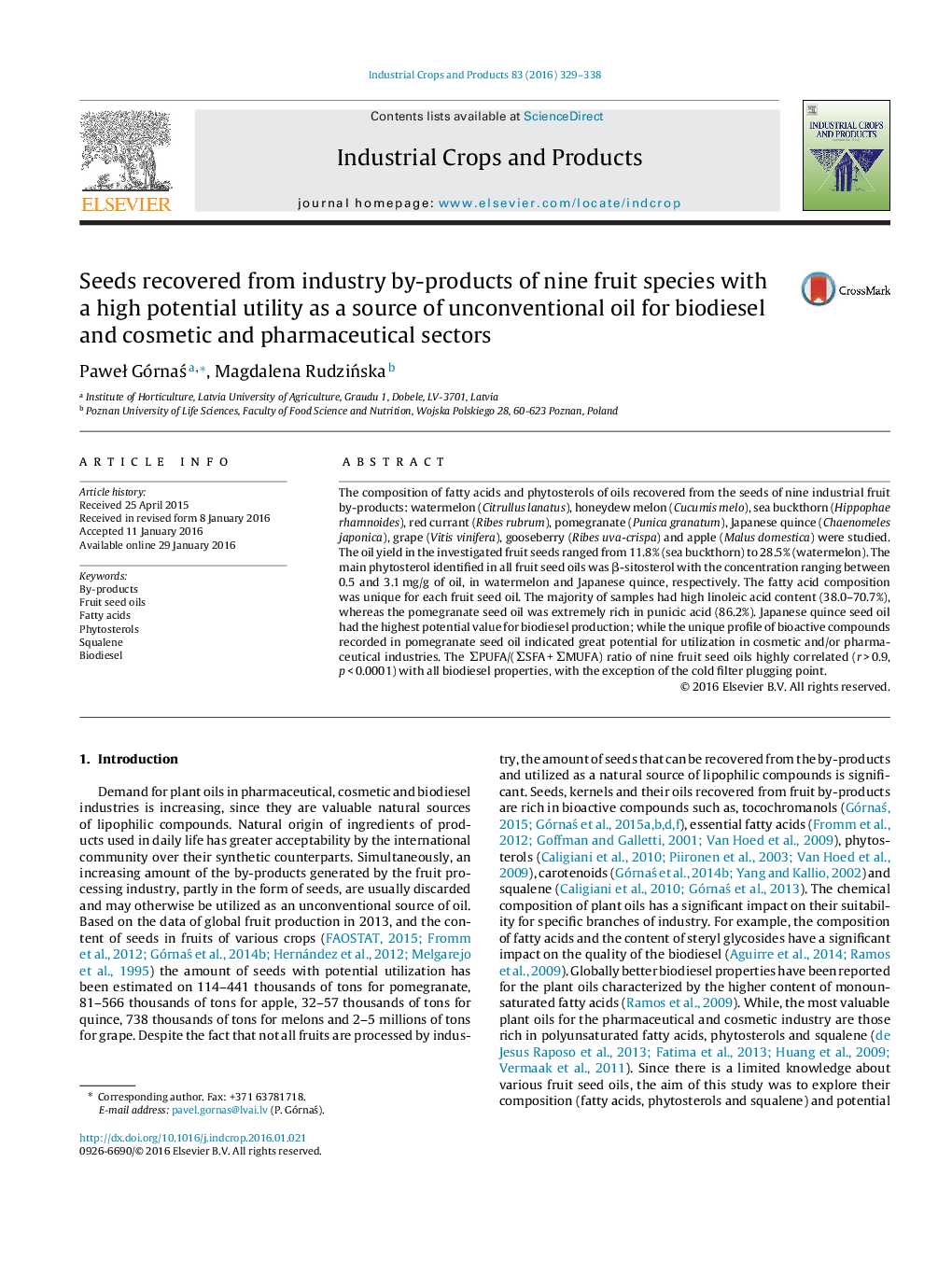| کد مقاله | کد نشریه | سال انتشار | مقاله انگلیسی | نسخه تمام متن |
|---|---|---|---|---|
| 4512279 | 1624827 | 2016 | 10 صفحه PDF | دانلود رایگان |
• The by-products of various fruit species are valuable sources of seed oil (12–29%).
• PUFAs are predominant FAs in all tested oils recovered from fruit seeds (over 50%).
• Selected fruit seed oils are rich sources of phytosterols and squalene.
• The ΣPUFA/(ΣSFA + ΣMUFA) ratio of oils is highly correlated with biodiesel properties.
• Japanese quince (Chaenomeles japonica) meets European biodiesel standards.
The composition of fatty acids and phytosterols of oils recovered from the seeds of nine industrial fruit by-products: watermelon (Citrullus lanatus), honeydew melon (Cucumis melo), sea buckthorn (Hippophae rhamnoides), red currant (Ribes rubrum), pomegranate (Punica granatum), Japanese quince (Chaenomeles japonica), grape (Vitis vinifera), gooseberry (Ribes uva-crispa) and apple (Malus domestica) were studied. The oil yield in the investigated fruit seeds ranged from 11.8% (sea buckthorn) to 28.5% (watermelon). The main phytosterol identified in all fruit seed oils was β-sitosterol with the concentration ranging between 0.5 and 3.1 mg/g of oil, in watermelon and Japanese quince, respectively. The fatty acid composition was unique for each fruit seed oil. The majority of samples had high linoleic acid content (38.0–70.7%), whereas the pomegranate seed oil was extremely rich in punicic acid (86.2%). Japanese quince seed oil had the highest potential value for biodiesel production; while the unique profile of bioactive compounds recorded in pomegranate seed oil indicated great potential for utilization in cosmetic and/or pharmaceutical industries. The ΣPUFA/(ΣSFA + ΣMUFA) ratio of nine fruit seed oils highly correlated (r > 0.9, p < 0.0001) with all biodiesel properties, with the exception of the cold filter plugging point.
Figure optionsDownload as PowerPoint slide
Journal: Industrial Crops and Products - Volume 83, May 2016, Pages 329–338
